Artist Talk and Q&A with Michael Maurissens and Sagí Amir Gross
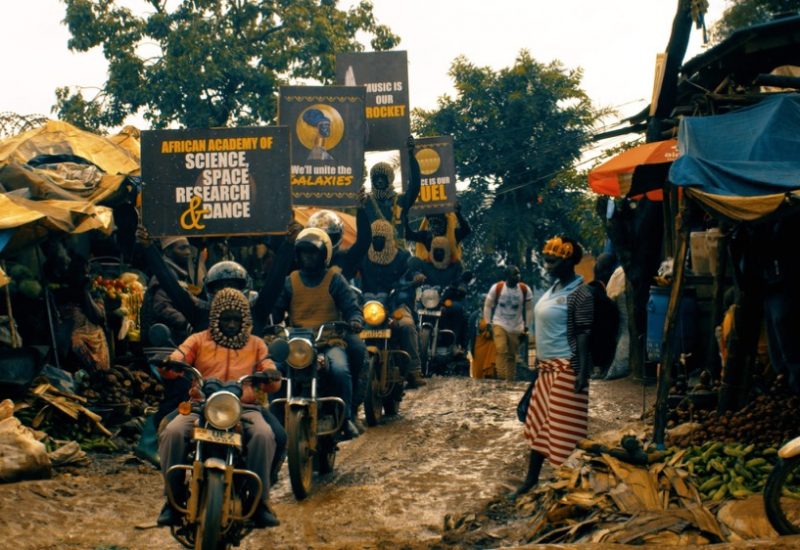
We Are Going To Mars – And We’ll Unite The Galaxies
Germany/Uganda/USA, 2021, 13′
Concept: Christoph Winkler, Direction: Robert Ssempijja.
In 1960, Edward Mukuka Nkoloso founded the Zambia National Academy of Science, Space Research and Philosophy. The goal: an African space programme of its own to join the “Space Race” between the USA and the Soviet Union. On a remote farm, the “Afronauts” trained on self-built equipment. Together they created a rocket out of sheet metal and wanted to launch it into space on 24 October 1964 – the day of Zambia’s independence from Great Britain. The rocket was to be piloted by 17-year-old Matha Mwambwa, the only woman on the team.
Read More
The attempt to launch an African space programme was taken anything but seriously by the international press. But hardly anyone thought of the project as a satirical commentary on the megalomania and absurdity of an imperialist show of strength like the “Space Race”. Until a video of the training surfaced ten years ago and triggered a change of perspective. To this day, it is not certain whether the project was a serious scientific endeavour, a joke at the expense of the colonial powers, or even a cover for a training camp for independence fighters. Either way, today the term Afronauts stands for a new self-confidence of black people visible in the videos from the 60s.
Originally planned as a stage play, the company changed the concept and produced video works in Uganda and the USA together with local artists, which set very different accents. The Ugandan contribution, which was created with the choreographer Robert Ssempijja, among others, celebrates the spirit of optimism associated with the Space programme and locates Mars in its own homeland.
A production of the Company Christoph Winkler in co-production with SOPHIENSÆLE.
Supported by the Hauptstadtkulturfonds and the Senate Department for Culture and Europe.
Dancers: Robert Ssempijja, Denis Magezi, Lydia Kasirye Nanozi, Shane Munina, Stuart Etou, Davis Ahimbisibwe, Herbert Jovan Simbwa, Denis Lule, Dance Theatre Uganda, Umar Kareregga, Fausta Nakasujja, Joana Mbabazi, Joan Nakawombe, Shafic Walusimbi, Ian Elijah Ssenkungu, Richard Kasosi, Edward Jjombwe, Salama Natabi, Sosolya Undugu Dance Academy, Intare Performers, Walter Ruva, Moses Mukalazi, Anna Tracy Aguti, Martha Naggita, Prisca Atite, Noah Bemuka, Bosco Kitabira, Joel Kakande, Godfrey Natuhwera, Julius Musenze, Edison Musanje, Mario William Mayega, Edison Musanje, Richard Tamale
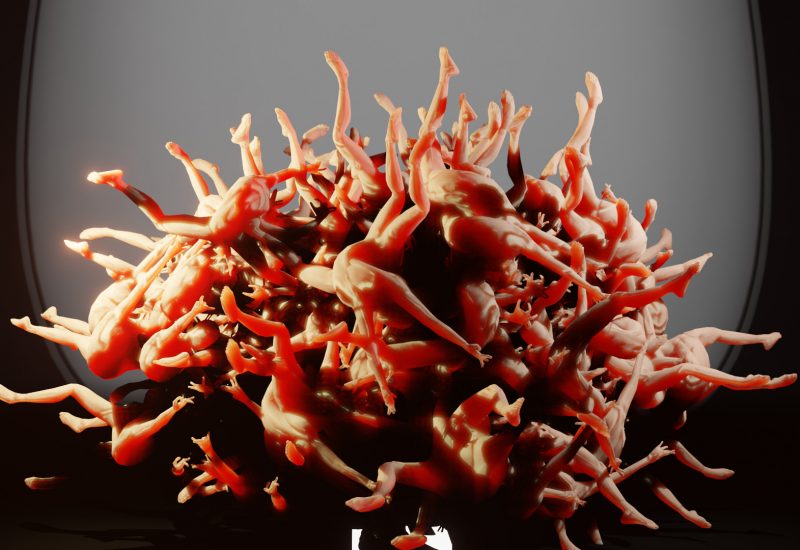
SYLPHIDES 3.1
Brazil, 2022, 4′
Direction and Choreography: Diego Mac.
Sylphides 3.0 is a collection of 1/1 videos created by mixing and hybridizing dance with 3D animation. The numbering in it refers to Web 3.0, and each item in the collection receives a subsequent numbering: 3.1, etc. The figure of the feminine, romantic, air genie, vaporous, enigmatic and superhuman sylph gives way to androgynous figures, neither masculine nor feminine, decentralized, with simulated physics, soft parts, procedural choreographies, disjointed movements and hyperflexible articulations. Hyperhumans. Several bodies. Various dances.
Read More
Item 3.1 of the collection presents 200 sylphs in embryological form. Various elements of the language of dance, such as the waltz, the wheel, control, the support point, the mobility of the joints and the relationship with gravity were submit to the logic of animation and 3D simulation, such as soft bodies, plastic bodies, expansion and contraction of force fields, fluids, winds, low gravity and impulsive surfaces. Thus, there is a collective ballet body, with a single pulse, but with particular focuses and dismemberments, exploring the relationship of classical ballet elements with modern and contemporary dances. The work is accompanied by an original historical recording of “Les Sylphides”, published in 1916, by Ballets Rus Serguei Diaghilev.
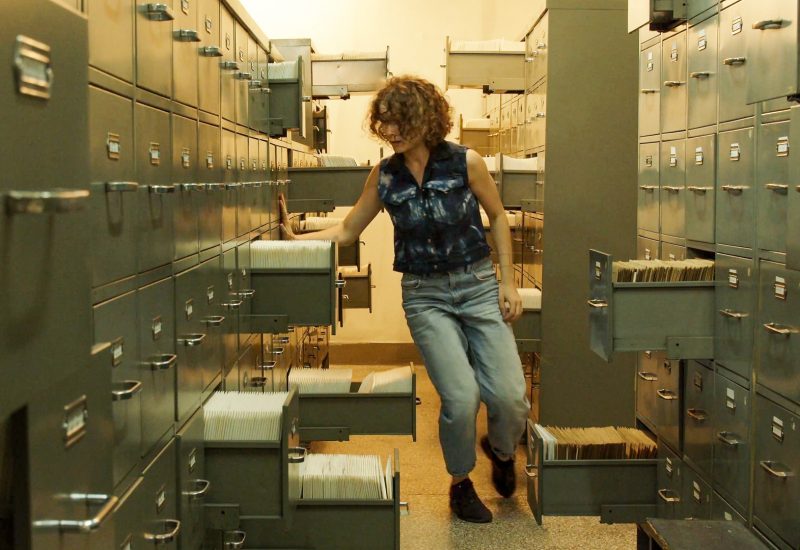
SISYPHUS ROOM
Greece, 2022, 2′
Direction: Nikos Elias Chrisikakis, Choreography: Marina Kladi.
The dancer Marina Kladi makes a choreography/comment in a dystopian archives room. The claustrophobic scenery is just a place to avoid and escape from.
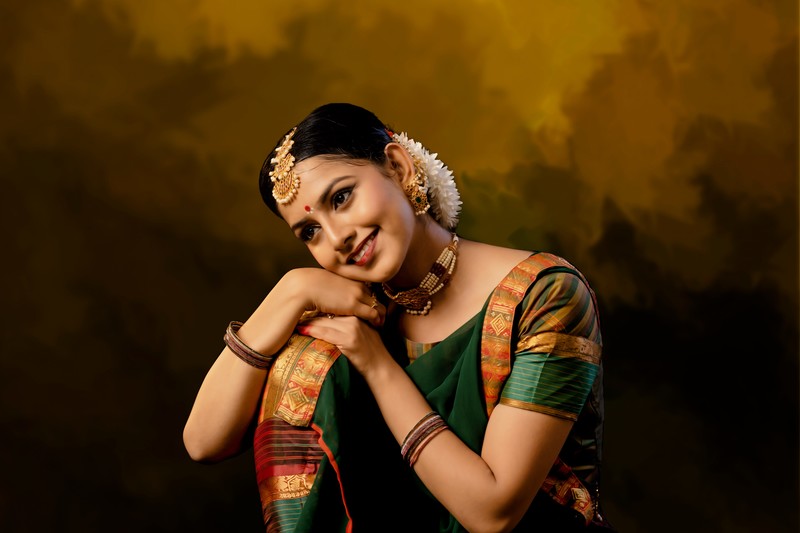
PETA – The dancing turban
India, 2022, 2’17”
Direction and Choreography: Varsha Raviprakasha.
We become what we wear in our Heart and Mind! Let’s choose to wear a turban of Happiness, Joy and Compassion! Let’s try to have lighter and happy moments in life to make life memorable to ourselves!
PETA – The Dancing Turban is a short, comedy dance film which is executed in the Indian Classical Dance form, named Bharathanatyam.
We have expressed how one can get a magical turban of Happiness through Dance!
We are hoping to get a smile when you watch this video!
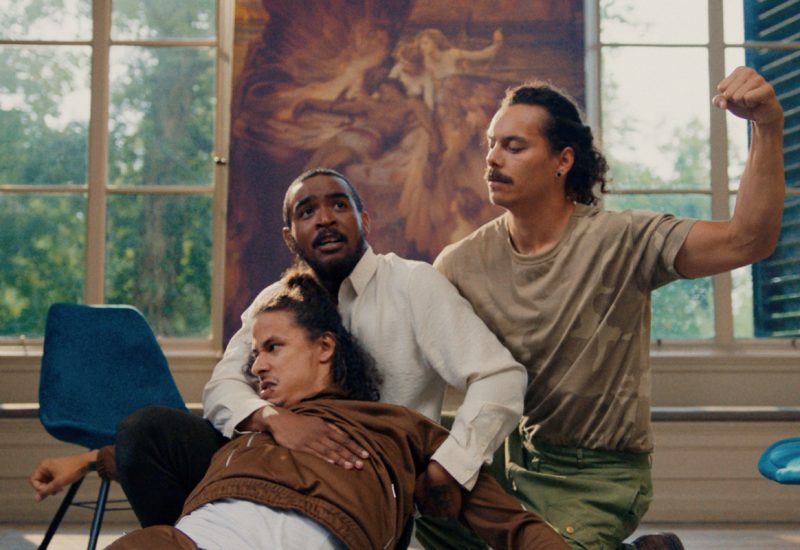
FIST
Netherlands, 2022, 13′
Direction: Thomas Bos, Choreography: Erik Bos.
Patrick is angry, and he wants to break everything around him. When attending a forced anger-management course he meets other enraged people from different backgrounds. An experimental therapist tries to force their brutal energy out through dance. Can Patrick find a way to direct his violent energy towards something that is valuable for him, or even worthwhile for others?
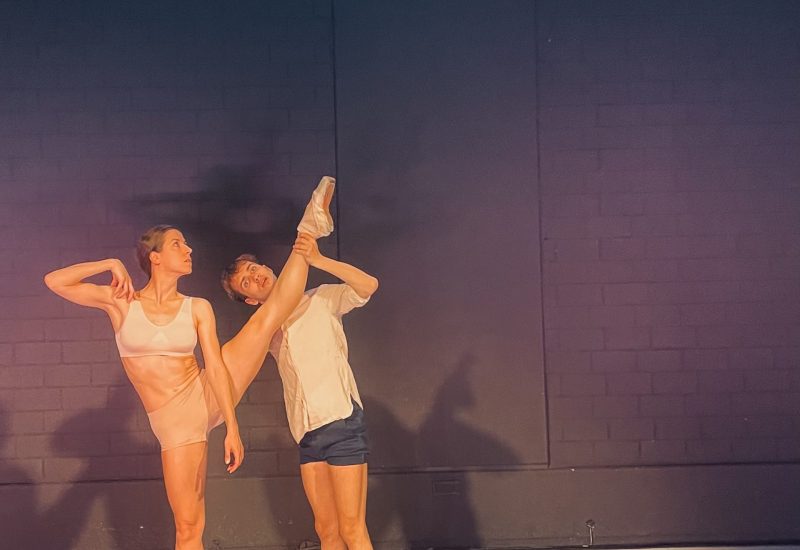
Printemps 22
Israel/Germany/The Netherlands 2022, 35’10”
Direction & Choreography: Sagí Amir Gross, Cinematographer: Michael Maurissens.
The film ‘Printemps 22’, by film director & choreographer Sagí Amir Gross, presents a sensitive observation of the Parisian Jewish Ukrainian, Russian ballerina Laura Fridman. Gross interviewed Fridman and wrote a script based on her life story. The film exposes her intimate fragility, set against the background of the Ukrainian / Russian war. The camera movements are choreographed around the ballerina, to give the spectators a poetic personal story. The film is part of Gross’s artistic philosophy ‘Physical Script’, a personal approach to merge interdisciplinary film & stage works into a unique cinematic experience.
Read More
Director, script, choreographer, costumes, and light design: Sagí Amir Gross
Performers: Laura Fridman & Adrian Gago Martins
Cinematographer: Michael Maurissens
Camera work: Michael Maurissens & Sagí Amir Gross
Management: Jozsef Csaba Hajzer
Production: Thomas Seidel & Ina Topeters
The film is a produced by WDTanztheater and supported by GrossDanceCompany foundation Amsterdam.
Artist Talk and Q&A with Samantha Shay, Barbara Kaufmann, Nathalie Larquet, Kerstin Hamburg, Michael Baudenacher and Paul White
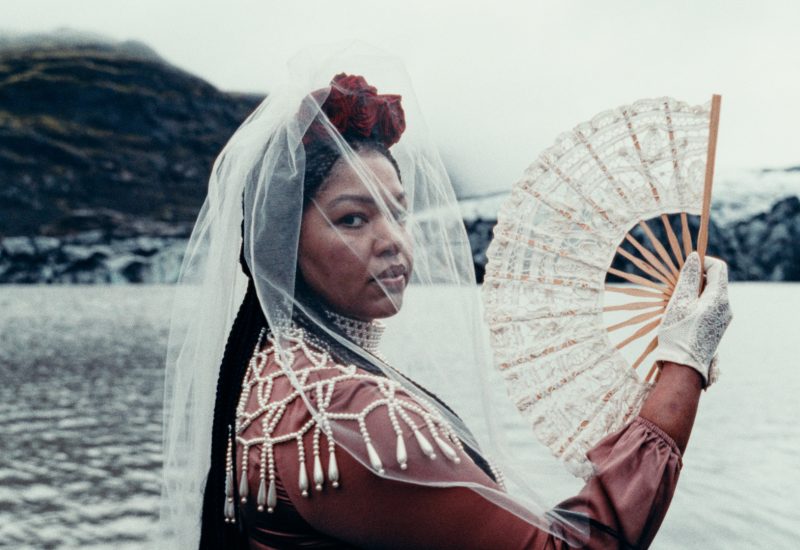
Mother Melancholia
Germany, 2022, 29’34”
Direction and Choreography: Samantha Shay.
Mother Melancholia by Samantha Shay is a multi-layered portrait of four women and a eulogy for the planet set to and inspired by Sóley’s album of the same title – a self-proclaimed soundtrack for the end of the world as we know it. Co-commissioned by Tanztheater Wuppertal Pina Bausch, the dance film approaches patriarchal politics and ecofeminism through an unguarded, unsettlingly beautiful meditation on the difficulty, and immediacy of being fully present in the world. Filmed in the surreal and eroding Icelandic landscape, Mother Melancholia is a quiet, yet urgent conduit between the internal world of the human experience and the planet we inhabit.
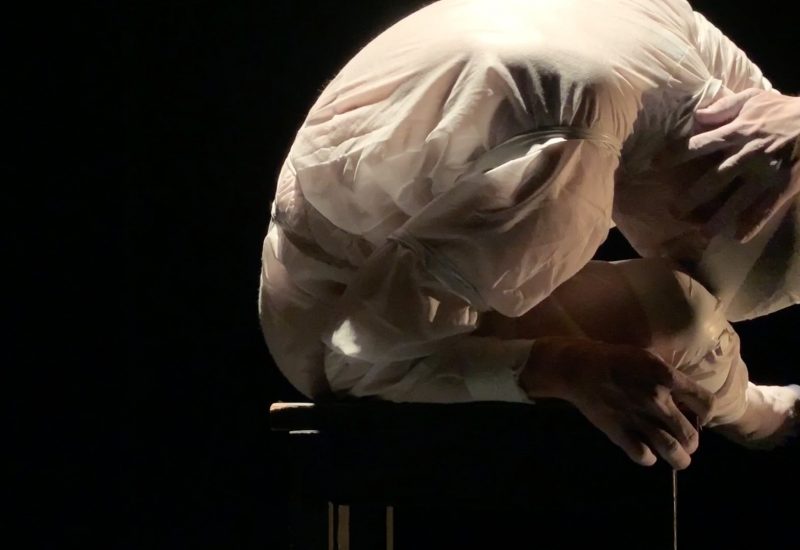
remember me
Germany, 2021, 33’26”
Direction: Kerstin Hamburg, Michael Baudenacher, Paul White, Choreography: Paul White.
Documentary and dance film on the legacy of Friedrich Engels and the discussion of the culture of memory. The larger-than-life bronze statue by the Chinese artist Zeng Chenggang depicts the German social theorist, textile entrepreneur and revolutionary Friedrich Engels. The statue’s plinth is 40cm high and the statue itself weighs 868kg. The donation by the People’s Republic of China has triggered heated discussions. Which forms and symbols of collective memory are significant for us today? Why should we still remember Engels? The film sheds light on Engels as a person and his historically relevant ideas. A film that counteracts an idealization that bores or makes us forget: self-ironic, playful, critical, dancing.
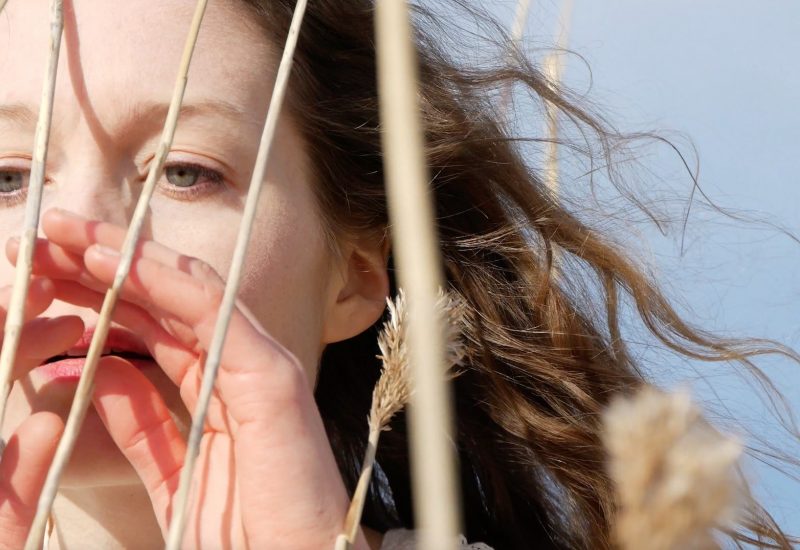
Helsinki Diaries
Finland, 2022, 10’26”
Direction and Choreography: Nathalie Larquet.
The choreographer and filmmaker Nathalie Larquet travels to Finland for her first independent dance film in order to make a portrait of the German dancer Gesa Piper in the harsh winter conditions. But Gesa is heavily burdened by an event…
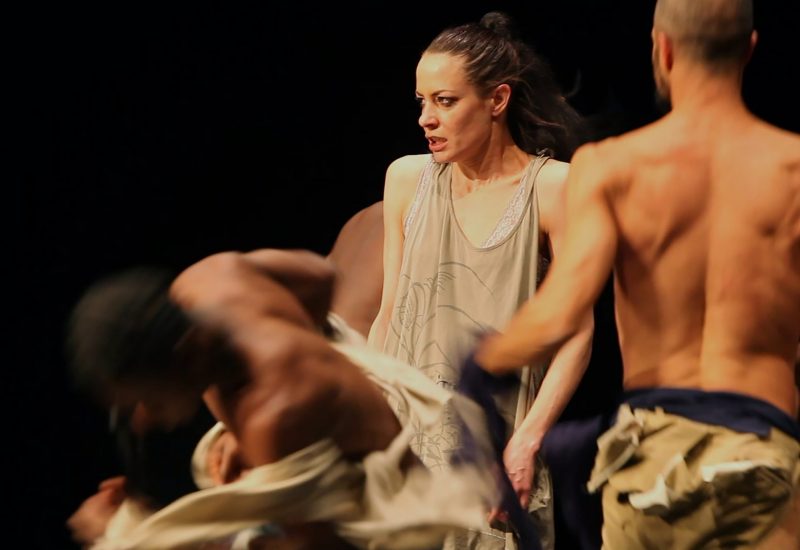
Why we fight
Belgium, 2021, 98′,
A film by Alain Platel, Mirjam Devriendt.
In his very own radical manner, the Belgian choreographer combines dance and music with interviews and archive images of current political events. The film begins in the rehearsal rooms of his dance company “les ballets C de la B”. The group is developing a new piece. During the improvisations, they begin to tear their clothes off. Their fears about the future, shaped by wars, violence and identity crisis, are discharged in this physical borderline experience.
Read More
In coproduction with ZDF in association with arte, VRT, RTBF Télévision belge – Unité Documentaire.
Supported by: Flanders Audiovisual Fund (VAF), Centre du Cinéma et de l’Audiovisuel de la Fédération Wallonie-Bruxelles, Creative Europe MEDIA of the European Union, The Pascal Decroos Fund, City of Ghent & Culture Ghent, The Tax Shelter of the Belgian federal government via Flanders Tax Shelter, The Corona Emergency Fund of the Flanders Government, Presented at the Venice Gap-Financing Market 2020.
Artist Talk and Q&A with Tobias Staab, Gustavo Gomes and Max Levy
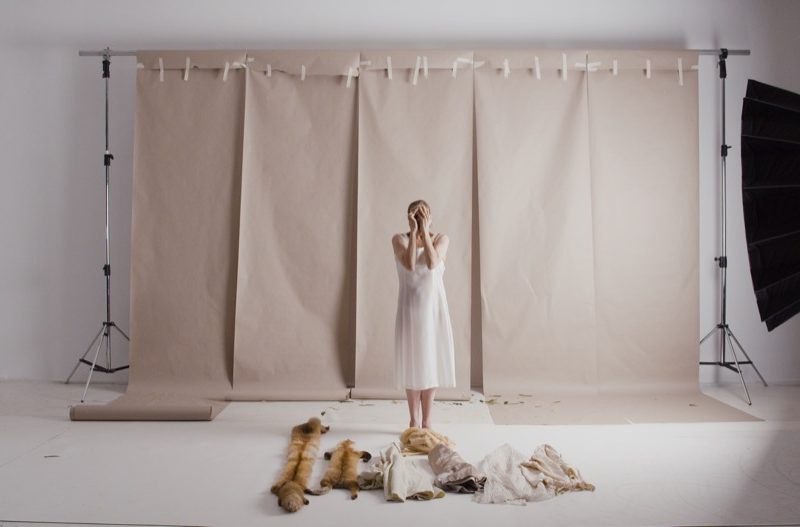
Bardo
Germany, 2022, 30′
Direction: Tobias Staab, Choreography: Gustavo Gomes.
In a contourless room, a dancer tries out dying. His writhing body struggles against dark forces. Cut. Another room. Another death.
In “Bardo,” director Tobias Staab and choreographer Gustavo Gomes attempt to approach the thematic complex of death and dance. Between traditional gestures, personal experiences and speculative movement material, dying on the screen is tested, subverted and celebrated in ever new ways.
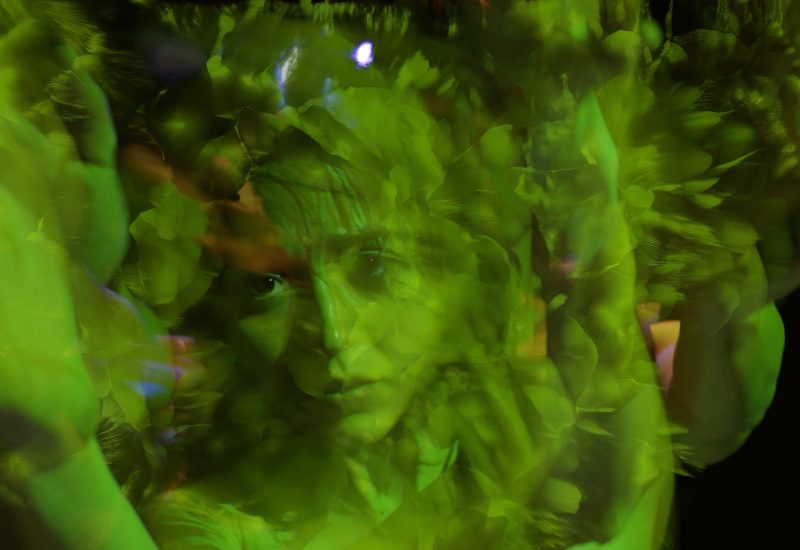
Sleepdancing I: Ar e Luar
Germany, 2022, 30′
Direction and Choreography: Max Levy.
Sleepdancing proposes a novel approach to guided sleep in a new format of digital danceworks. Born as a collaboration between Max Levy Choreographic Works and art duo Cosa Mentale, Sleepdancing blends dance and digital animation into tools for guided hypnosis, an interplay of choreographed bodies and choreographed code that lull the viewer to relaxation.
With this unique goal, Sleepdancing stands apart from the standard performance mindset. Here, there is no pressure to be an attentive audience, no obligation to interpret high art. Here, close your eyes when you’re ready; sink in and drift off. Sleepdancing offers a unique opportunity through the beauty of dance and visual art to glimpse the fantasy beneath our eyelids.
Read More
The first installation Ar e Luar (Portuguese: Air and Moonlight) sets us on the moonlit surface of a distant recurring dream; Lunar goddesses reflecting and echoing one another in an oneiric mixture of intimacy and abstraction, guiding a delicate balance of dance and design. A sound, a spell, an incantation, Ar e Luar suspends us between concentration and serenity to shepherd the last thoughts of our day to the stars.
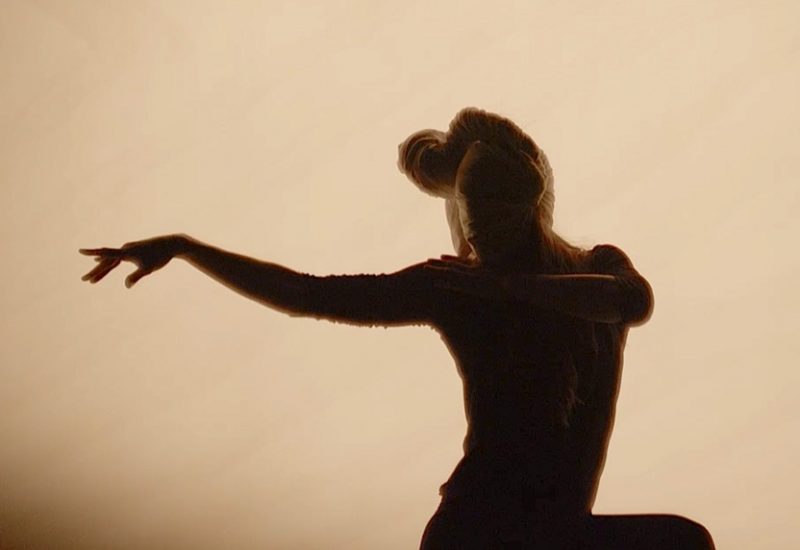
Giselle – Theater of Apophenia
Germany, 2022, 25′
Directed by Gustavo Gomes Choreography by Gustavo Gomes in collaboration with the dancers.
A child looks at the clouds and says to his mother: look mom, a horse. A woman looks at another woman who is brushing her hair at the bar and think: she is flirting with me. A fragile peasant dancer looks at a duke entering the village and thinks: this is my man. All asserting that we see what we know. Apophenia, a symptom of schizophrenia, which forces the brain to see secret codes, clues, conspiracies in random data is the tool that the artist Gustavo Gomes uses to enhance the theater of imagination. Inspired by the ballet Giselle, Gomes tells the story of 3 characters conflicted by their own past experiences while longing to find love. Through old theatrical tactics such as shadow playing, distant characterisation and mimics, the three characters become Giselle, a hopeless romantic, Albrecht, a confused enamoured duke, and Bathilde, a woman who figures that is being cheated on.
Read More
By encountering deception and betrayal the characters morph their own experiences to show a tale of pain and forgiveness. Showcasing various forms of infidelity through text and body language, the characters are found questioning if their body impulses and emotions are enough to give openness to their enamoured other. Using the classical ballet as an inspirational thread, the work explores the complexity of relationships in a non moralistic format. Love is portrayed as the generative force that ties people together while separation is the tool to generate growth. Humans can be Willies, revengeful personas, and Giselles, weakened heart romantics. It is all coming down to choice and self justification. In Giselle – The Theater of Apophenia, the characters tell their own side of the story on and off camera, while learning to move on and forgive using their bodies as a vessel of that experience. Work made part of the residency program provided by HELLERAU – European Center for the Arts. Supported by the Performing Arts Fund with funds from the Federal Government Commissioner for Culture and Media within the program NEUSTART KULTUR
Augmented Reality
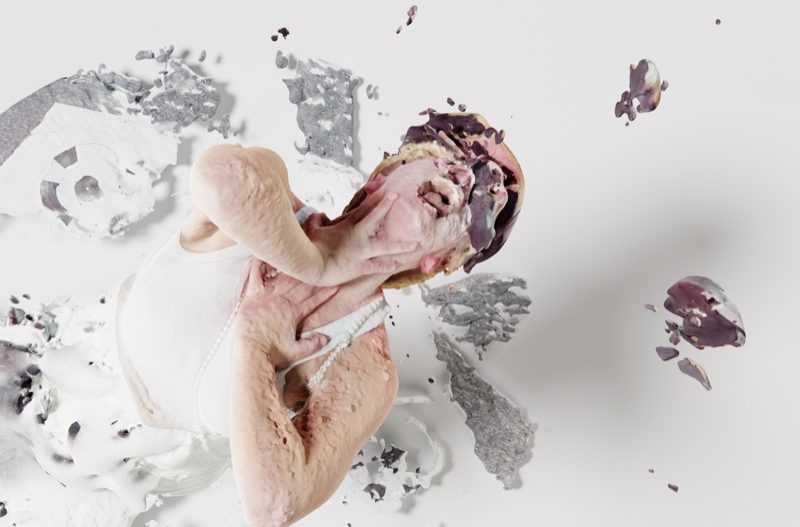
BARDO AR
Germany, 2023
Direction: Tobias Staab, Choreography: Gustavo Gomes.
Physical death is always linked to disappearance. The digital is set against the transience of the material. Online cemeteries as virtual places of devotion or digital avatars of the deceased – composed of photographs – are expressions of this supratemporality. Against the backdrop of such comparatively new phenomena, Tobias Staab and Gustavo Gomes have created a series of augmented reality sculptures that are in a state of perpetual dissolution and are constantly rematerializing.
Read More
BARDO AR opens the view onto an immaterial and at the same time timeless in-between space, in which the dualism between life and death no longer seems to apply.
Supported by the NATIONALE PERFORMANCE NETZ – STEPPING OUT, funded by the Federal Government Commissioner for Culture and the Media as part of the NEUSTART KULTUR. Hilfsprogramm Tanz.
Sponsored by and produced at Muffatwerk München.
Special thanks to the costume department of the Münchner Kammerspiele, the team of the Muffatwerk, Moritz Bossmann, DOCKdigital in Berlin, Ballet of Difference in Cologne as well as Ufo-Filmverleih and Youlittle in Munich.
Artist Talk and Q&A with deufert&plischke
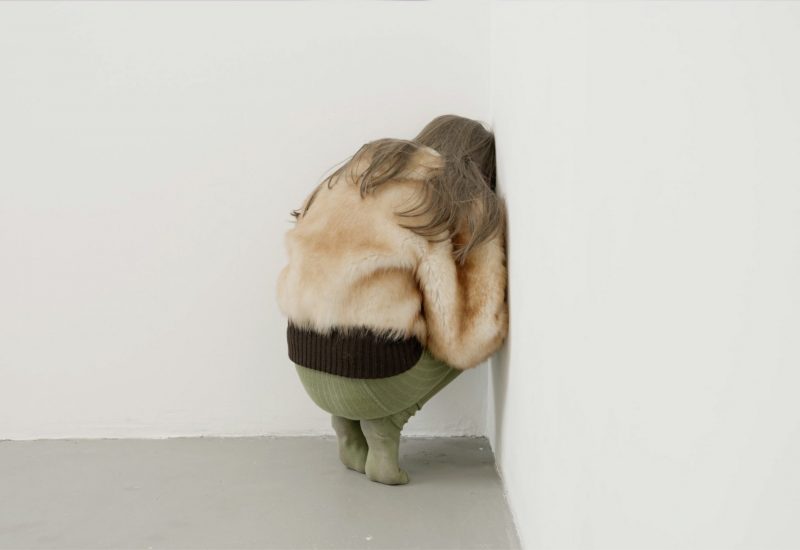
I like Erika and Erika likes me
Germany, 2021, 19’23”
Concept: deufert&plischke.
In 2002 deufert&plischke performed the 96h action „I like Erika and Erika likes me“ at the 1822 Gallery in Frankfurt a. Main to reflect on the seminal performance of Joseph Beuys „I like America and America likes me“ (1974). To draw a feminist perspective they constructed a viewing machine that lures and challenges the viewers to reflect on their gaze. In order to view the performance one had to stand on a stool in-front of a large shopwindow and peep into the performance space where deufert&plischke performed everyday activities: cooking, sleeping, working, sex … but standing on the stool one also stood right in the middle of a large picture, as the windows served as projection screens: photographs of deufert&plischke lying like dead bodies in the forest and floating in the river, dressed only in knitted tights.
Read More
This inside-outside entanglement is also the focus of their new film „I like Erika and Erika likes me“ commissioned for the Wuppertaler Performancefestival 2021. This time they interweave reflections on an early drawing of Joseph Beuys (Mädchen, 1957) with his performance „I like America and America likes me“ (1974) and new photographs taken by them in the forests. The narrative repeatedly aims at translating the drawing in words, to empower the girl in the picture and in the same time to acknowledge her fear. The setting permanently oscillates in-between the white cube gallery space, the limitations of the body and the forests of Wuppertal.
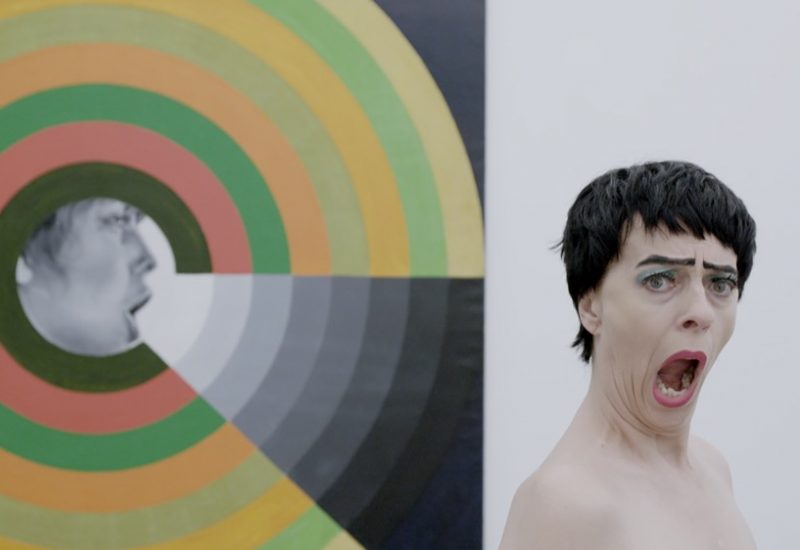
Reappearance
Germany, 2022, 37′
Direction and Choreography: Eszter Salamon.
In the empty spaces of a museum, a female figure wanders about, naked. She bears a strong resemblance with German avant-garde artist Valeska Gert. All at once intruder, agitator and entertainer, she plays with the museum’s empty architecture, occupies the cinematic space, uses the camera as a tool for emancipation. Juggling with surveillance and the desire to be seen, she transforms invisibility into presence as her body and voice inhabit historical traces, autobiographical memories, and fiction.
Read More
Reappearance is a cinematic speculation on history and memory. The film is based on two anecdotes recounted by Valeska Gert in her autobiographical book, Ich bin eine Hexe: in one, she dances naked for her lover, a pianist, in exchange for the pieces he composed for her. In the other, set in London in the mid-1930s, she tries her hand at writing a film script. Over the course of three weeks, she dictated her ideas to a man until she realised he was a drug addict and his transcripts were illegible. Reappearance is structured around this loss and Gert’s explorations of different media: dance, theatre, cabaret, and film. At its heart are the issues of female subjectvity and the materiality of the female body, as well as Valeska Gert’s use of the grotesque.
Choreographer, artist, and performer Eszter Salamon expands the tools of expression available in dance performance through theatrical works, lecture performances, films, and installations. Salamon’s works often engage in dialogues with history to analyze and question the established conventions of dance. Emboldening her dancers to use all means of bodily expression available to them, including their voices and sense of touch, Salamon develops choreographies with transnational and transhistorical points of reference to build works that challenge dominant narratives and bring forgotten or subsumed perspectives into the open. Mixing speculative fictions and autobiographical elements into her works, Salamon further destabilizes historical accounts to create possibilities for new realities to emerge. Eszter Salamon lives and works between Berlin, Paris and Budapest.
(Recipient of La Vie Bonne call for projects by the French National Centre for Visual Arts (CNAP) and Aware: Archive of Women Artists, Research and Exhibitions in 2020).
Director Eszter Salamon Performance Eszter Salamon Director of Photography Marie Zahir Dramaturgical Advisor, Outside eye Nora de Baan Sound Recordist Nora de Baan Editing Minze Tummescheit Colour Grading Arne Hector Sound Design, Music, and Re-recording Mixing Felicitas Heck Music Variation waltz #1 and waltz #2 written and performed by Felicitas Heck, original theme “Sobre las Olas” by Juventino Rosas (1888) Camera and Sound Equipment flockefilm GmbH, Florian Brückner Postproduction Studio cinéma copains Production Botschaft GbR / Alexandra Wellensiek, Studio ES / Elodie Perrin, Institute of Speculative Narration and Embodiment (Berlin)
Coproduced by HAU Hebbel am Ufer Berlin, Acziun by Muzeum Susch / Art Stations Foundation CH Supported by the NATIONAL PERFORMANCE NETWORK – STEPPING OUT, funded by the Federal Government Commissioner for Culture and Media within the framework of the initiative NEUSTART KULTUR. Assistance Program for Dance Funded by Berlin Senate Department for Culture and Europe, the Regional Directory of Cultural Affairs of Paris – Ministry of Culture and Communication
Special Thanks to Grazyna Kulczyk / Muzeum Susch founder, Joanna Lesnierowska/ Acziun Susch curator, Krzysztof Kosciuczuk /Muzeum Susch artistic director, and the team of Art Stations Foundation CH and PL (Sandra Bradvic, Marta Harasimowicz, Karolina Mazur, Peider Müller), Lucile Desamory, Christoph Fey / Von Have Fey Rechtsanwälte, Nanna Heidenreich, Anselm Heller, Caroline Kirberg, Robert Ralston, Alain Roux, Isabell Spengler, Antje Volkmann
copyright 2022 Eszter Salamon
Reappearance was recorded in August 2020 at Muzeum Susch, CH during the Evelyne Axell’s BODY DOUBLE exhibition (curated by Anke Kempkes, Krzysztof Kościuczuk).
Reappearance relates in various ways to the following works by Valeska Gert: Humoreske (1916), Modedame (1917), Pause (1920), Kupplerin (1920), Laster (1920), Orgasmus (1922), Clown (1922), Versammlung (1931), Schlummerlied (1950’s), Grüsse aus dem Mumienkeller (1926), as well as anecdotes and thoughts articulated in her autobiographical book Ich bin eine Hexe. Kaleidoskop meines Lebens (1968).
Some of the performative elements in the film have been developed after a series of works called The Valeska Gert Monuments; the sound installation Love Letters to Valeska Gert (2016) by Eszter Salamon, as well as the performances The Valeska Gert Museum (2017), and The Valeska Gert Monument (2017), both created in collaboration with artist and performer Boglárka Börcsök.
Biography
Eszter Salamon is an artist, choreographer, and performer. She lives and works between Berlin and Paris. She is currently doing an artistic Ph.D. at the National Academy of the Arts, KHiO, in Oslo. She won the Evens Art Prize in 2019 and in 2020 was the recipient of La Vie Bonne call for projects by the French National Centre for Visual Arts (CNAP) and Aware: Archive of Women Artists, Research and Exhibitions.
Salamon uses choreography as an activating and organising agency between various media, such as image, sound, music, text, voice, bodily movements, and actions. Since 2001 she has created performances, lecture performances, films, and installations that have been presented in performing arts venues and museums internationally.
Salamon’s works are research based and often engage in dialogues with history and the artistic past. She develops long-term projects with transnational and transhistorical points of reference to build works that challenge dominant narratives and bring forgotten or subsumed perspectives into the open. Mixing speculative fictions and autobiographical elements into her works, Salamon further destabilize historical accounts to create possibilities for new realities to emerge. Through transgenerational collaborations and feminist genealogies her monument series engage in modes of creating memory away from the historical canon.
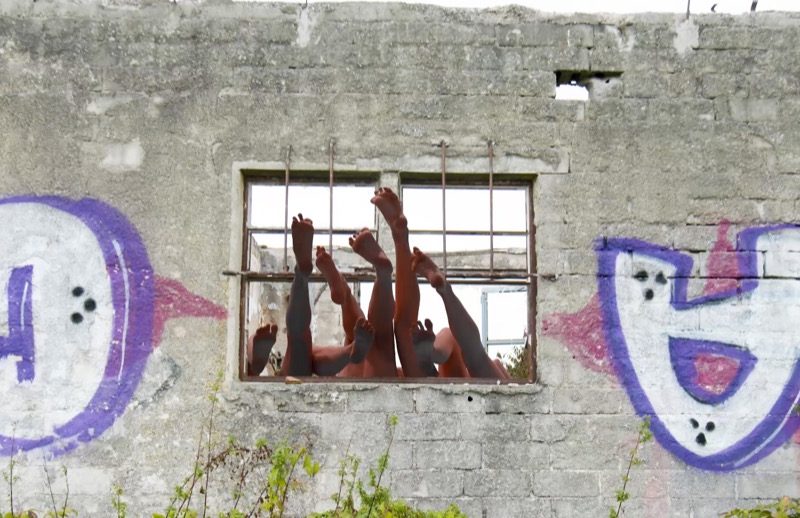
LUVOS migrations
Austria, 2022, 18’44”
Direction: Editta Braun, Meni Weissbacher, Choreography: Editta Braun.
Vision of the future or images from a parallel universe? In breath-taking natural sceneries, automated industrial landscapes and deserted ruins, a journey through time and living spaces unfolds. Strange LUVOS beings from Editta Braun’s body illusion theatre conquer the screen to Thierry Zaboitzeff’s powerful and sensitive music.
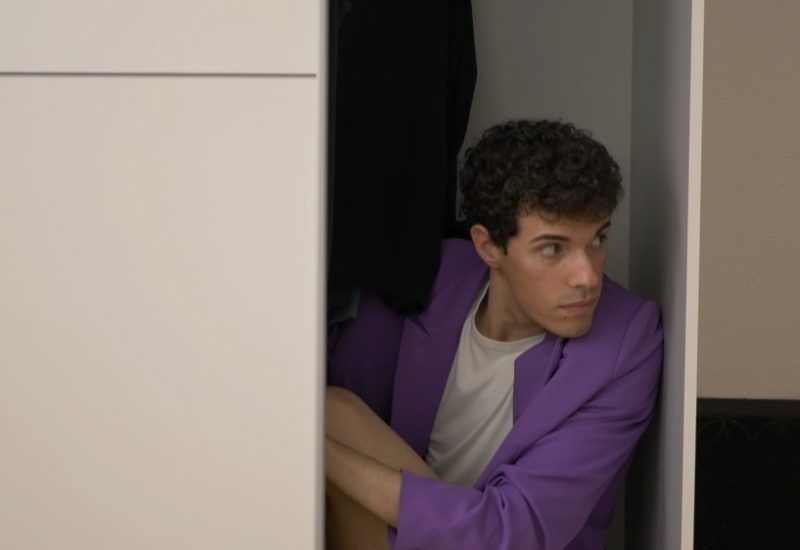
Just Me Here
Germany, 2022, 4’1”
Direction and Choreography: Amelia Seth.
An idea conceived during a strange two years of global pandemic, lockdowns and quarantines, when our houses and apartments suddenly became our whole world.
Someone might live alone, be alone, but that doesn’t mean they are lonely. A home can be four walls, a roof and floor, but it can also be whatever your imagination can make it.
Endless possibilities, endless adventures…
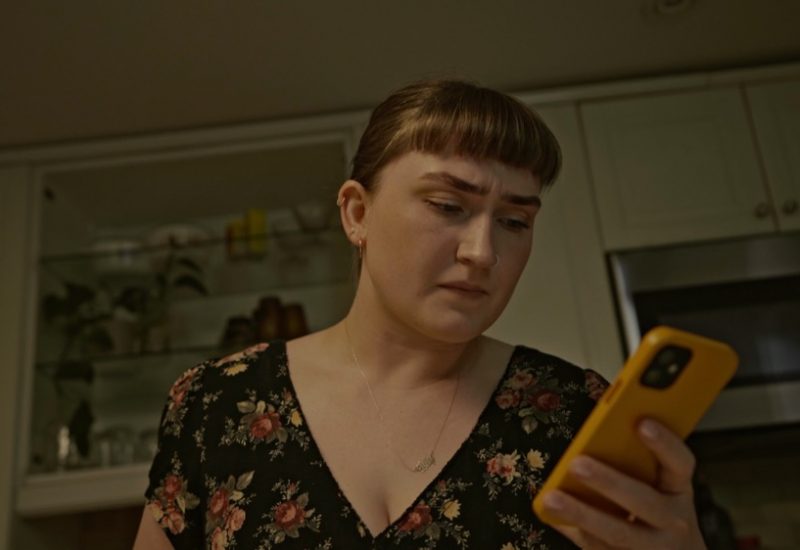
Manic Pixie Dream Girl
Canada, 2022, 5’35”
Direction and Choreography: Tianna Therriaul.
A young woman reacts to the lack of reciprocity in her romantic relationship.
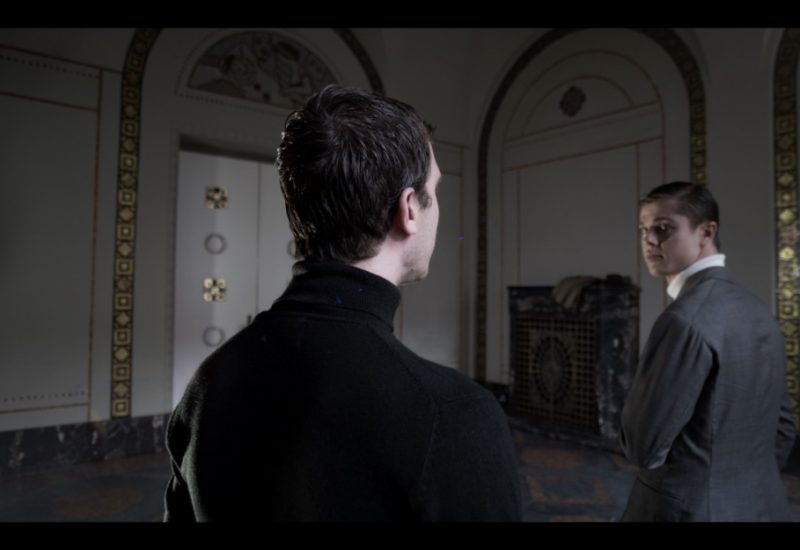
A quiet thriller
Germany, 2021, 9’22”
Direction and Choreography: Alessandra La Bella.
Why do we choose not to follow our instincts when we find ourselves in strange situations? How much responsibility do we carry in the fulfilling of our destiny?
There is a place where human will and destiny meet and collide – pulled like a tight thread it stretches over our perception and understanding of time.
Human curiosity and animalistic dance together in a slow dense rhythm where naivety plays a silent but essential role.
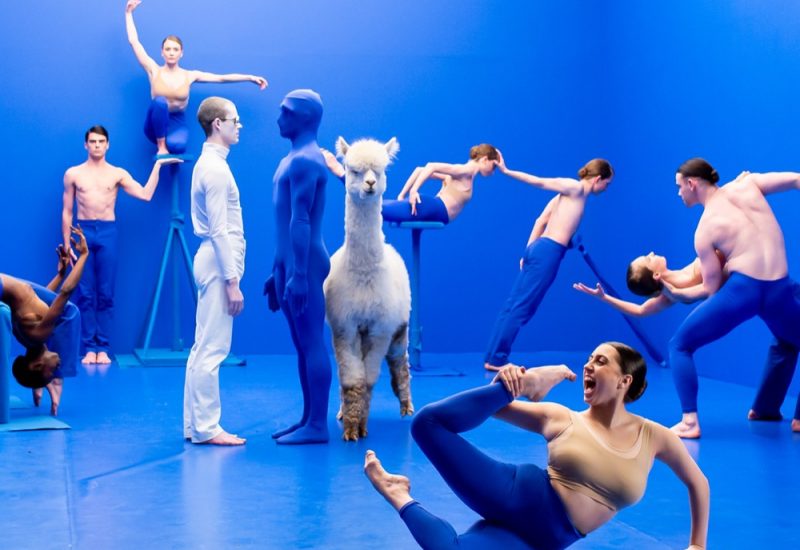
Dive
United Kingdom, 2021, 13”
Direction: Oscar Sansom, Choreography: Sophie Laplane.
Scottish Ballet’s Choreographer in Residence Sophie Laplane partnerd with James Bonas (The Crucible) and film director Oscar Sansom to create Dive, a short film inspired by French artist Yves Klein and what has become the world’s most famous shade of blue.
Expect Laplane’s quintessentially quirky choreography paired with striking visuals in this teal-toned treat.
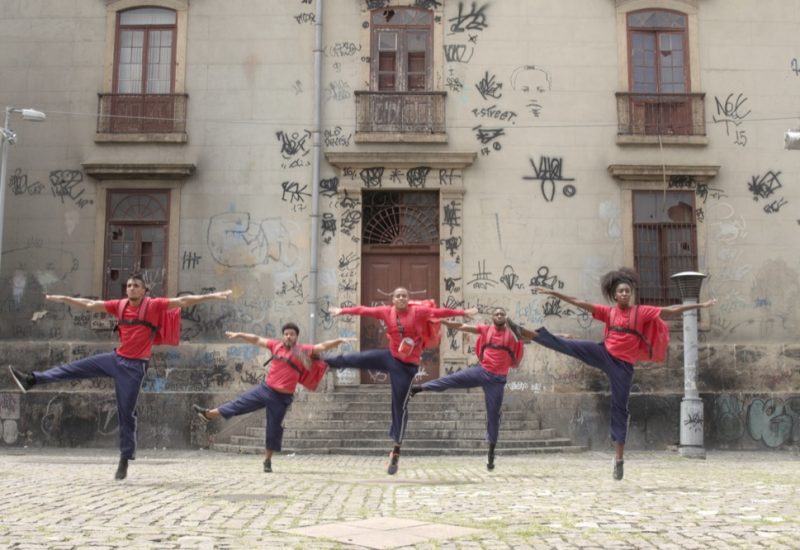
Neon Phantom
Brazil, 2021, 20′
Direction: Leonardo Martinelli, Choreography: Soraya Bastos.
A delivery man dreams of having a motorcycle. He was told that everything would be like a musical film.
Artist Talk and Q&A with Dwayne Hollid, Zwoisy Mears-Clarke, Ludger F. J. Schneider, Johannes Christopher Gerard
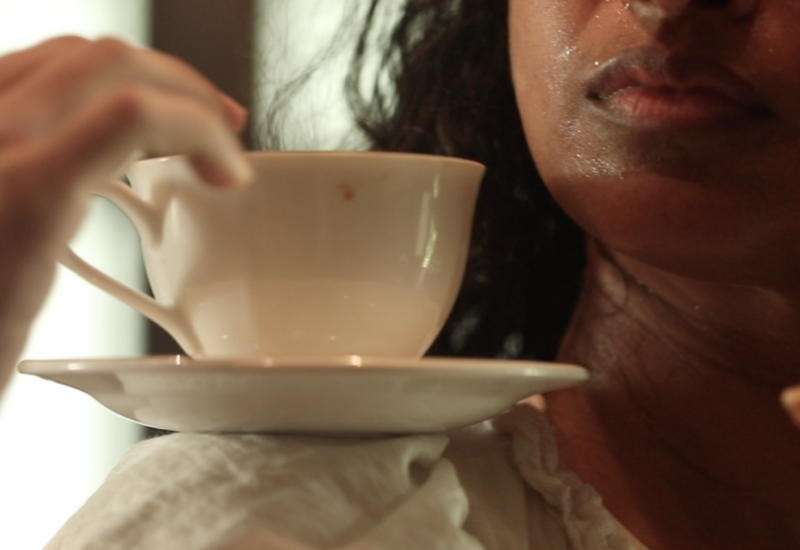
Porcelain White: The Conversation
Germany and Sri Lanka, 2020, 28’23”
Artistic Direction, Concept; Zwoisy Mears-Clarke and Venuri Perera, Film Direction: Arun Welandawe-Prematilleke, Choreographers Venuri Perera and Zwoisy
Mears-Clarke, born several oceans apart in Jamaica and Sri Lanka, both former colonies of Britain, find that they have in common a ‘whitened’ inheritance. They were both brought up in the English-speaking middle class, which maintains certain practices adopted from the former colonial masters, that protect their social status. Conversing across continents, they probe their complicity. In this film, they unravel the complexities and limits of their inherited privilege as they inhabit neocolonial spaces.
Read More
Zwoisy Mears-Clarke is a choreographer of the encounter. Zwoisy uses the potential of dance and storytelling to suspend forms of oppression such as neo-colonialism, sexism and ableism, in order to enable encounters that might otherwise seem unreachable. Currently, Zwoisy lives in Rösrath.
Venuri Perera is a choreographer and performance artist from Colombo. Her work deals with violent nationalism, patriarchy, border politics, and power dynamics of gazes. She is interested in the power of vulnerability as well as possible preconditions for empathy.
Artistic Direction, Concept, Text, Performance: Zwoisy Mears-Clarke, Venuri Perera; Film Direction, Film Editing: Arun Welandawe-Prematilleke; Cinematography Germany: Florence Freitag; Cinematography Sri Lanka: Jonathan Wijayaratne, Ryan Wijayaratne; Sound: Isuru Kumarasinghe; Film Editing: Ryan Wijayaratne; Translation: Melmun Bajarchuu; German Sign Language: Katharina Rerich. Thanks to: Sunila Galappatti, Sara Mikolai.
A production by Zwoisy Mears-Clarke and Venuri Perera, coproduced by Festival Theaterformen and tanzhaus nrw, funded by the international coproduction fund of Goethe Institute.
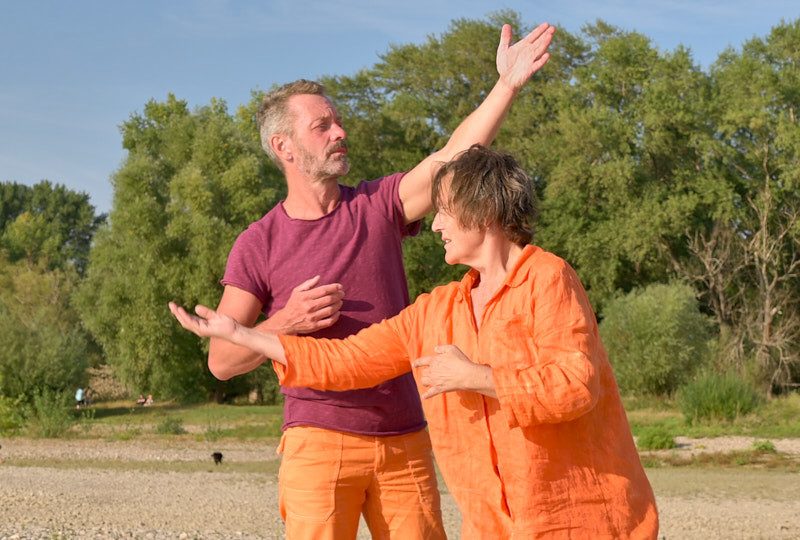
R(h)ein(e) DisTanz
Germany, 2022, 17′
Direction: Ludger F. J. Schneider, Choreography: Sabine Seume, Andreas Simon.
R(h)ein(e) DisTanz is an improvisation about the themes of distance, communication and closeness, which took place on September 12, 2020 on both banks of the Rhine in Dormagen-Zons and Düsseldorf-Urdenbach.
The performers Sabine Seume and Andreas Simon play with different levels and the Rhine, deal with themselves, approach each other and exchange ideas.
The Rhine is a separating and a connecting element, border, transport route and playground.
In the process, an exciting exchange of movement, time and spatiality is created through the dance, the film editing (including the use of the split-screen process) and the music as a supporting and rhythmic structure.
Read More
Zwoisy Mears-Clarke is a choreographer of the encounter. Zwoisy uses the potential of dance and storytelling to suspend forms of oppression such as neo-colonialism, sexism and ableism, in order to enable encounters that might otherwise seem unreachable. Currently, Zwoisy lives in Rösrath.
Venuri Perera is a choreographer and performance artist from Colombo. Her work deals with violent nationalism, patriarchy, border politics, and power dynamics of gazes. She is interested in the power of vulnerability as well as possible preconditions for empathy.
Artistic Direction, Concept, Text, Performance: Zwoisy Mears-Clarke, Venuri Perera; Film Direction, Film Editing: Arun Welandawe-Prematilleke; Cinematography Germany: Florence Freitag; Cinematography Sri Lanka: Jonathan Wijayaratne, Ryan Wijayaratne; Sound: Isuru Kumarasinghe; Film Editing: Ryan Wijayaratne; Translation: Melmun Bajarchuu; German Sign Language: Katharina Rerich. Thanks to: Sunila Galappatti, Sara Mikolai.
A production by Zwoisy Mears-Clarke and Venuri Perera, coproduced by Festival Theaterformen and tanzhaus nrw, funded by the international coproduction fund of Goethe Institute.
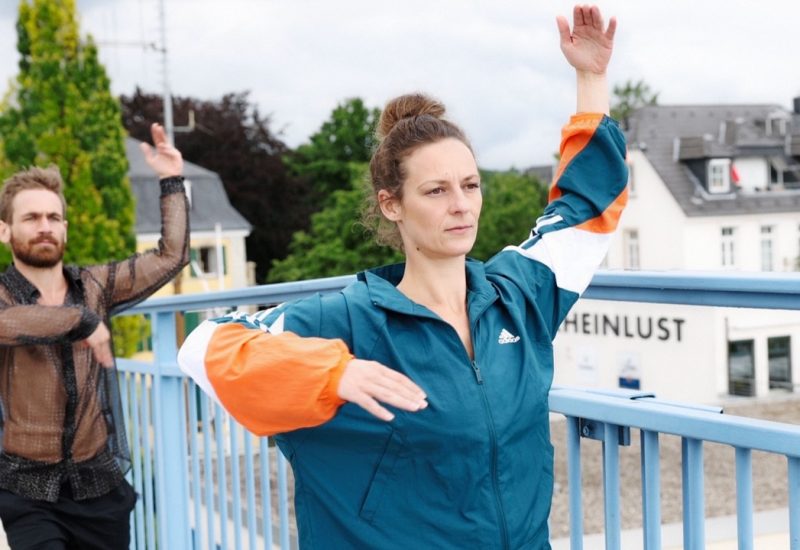
The Trouble With Form
Germany, 2021, 18’40”
Direction and Choreography: Dwayne Holliday.
What is the thing if it does not want to be pretty and is anyway changing all the time? The Trouble With Form is a dance film that explore an affirmative critique of gender norms in ballet partnering. Two contemporary dancers challenge another’s expectations, dynamically switching between roles as they reinterpret a famous duet from William Forsythe’s ballet “In the middle somewhat elevated”. Applying contemporary arts aesthetics, this short film juxtaposes the teleological narrative of one day’s time, with the capacity through editing of reordering choreographic time. The choreographic focus in this film is the dancers constant looping of one minute of choreographic material, aiming for each iteration to differ generatively from the others.
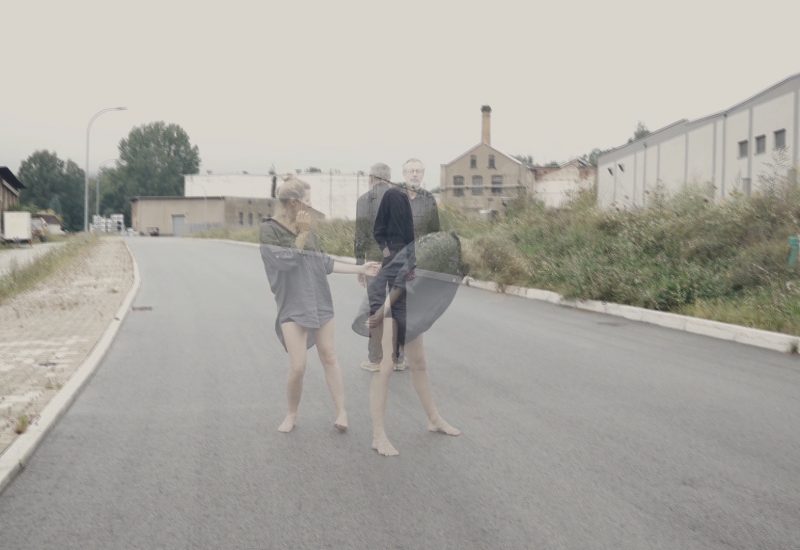
View behind the curtain…
Germany, 2022, 6’6”
Direction: Johannes Christopher Gerard, Choreography: Jana Schmück.
In international and collaborative projects such as The Ashes of Eden, site-specific themes are to be interpreted and developed through collaboration with regional artists and participants.
The Ashes of Eden is a joint work by Jana Schmück (Bautzen) and Johannes Christopher Gerard (Netherlands/Germany).
Read More
The concept of these projects is based on isolating, cataloguing, analyzing and studying in detail these site-specific themes or objects. Deepening the context they are in, how they differ from one place to another, urban/rural and social settings, neighborhoods or communities. How autonomous are the spaces or objects of a region and how are they related and interconnected?
In many of these projects, the public space becomes the stage. At the same time, they are interdisciplinary projects that include performance, dance, video, photography and sometimes also integrate site-specific installations.
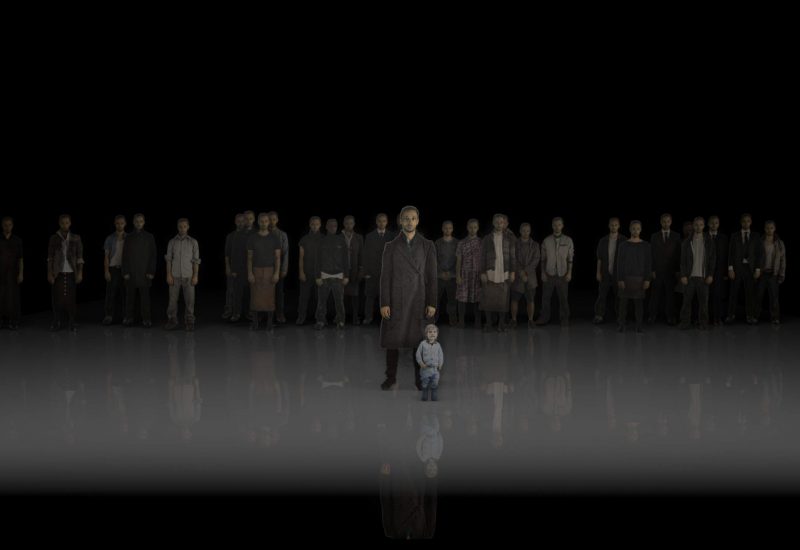
Tom
United Kingdom, 2020, 56′
Direction and Choreography: Wilkie Branson
TOM is a 60-minute animated dance work which is presented on 3 holographic gauzes. Creating a floating multidimensional experiences which hangs in the space.
Bringing together cutting edge technology to render the handcrafted 3D world physically in space TOM is an experience that borrows from cinema, immersive technologies and traditional physical animation to create a world which is like no other.
Read More
Set in a space between the civilised world and the wilderness, TOM tells the story of one man’s journey to rediscover who he really is. Will he find the answers he needs, or is the real TOM lost forever?
Created by award-winning choreographer, film-maker and Sadler’s Wells New Wave Associate Artist Wilkie Branson. TOM explores storytelling using the hip hop language of b-boying, bringing it together with cutting-edge technologies including animation, projection mapping, sound design and film installation. Playing with negative space and the projection of the work to create a depth of field, TOM is a unique and innovative dance for camera installation.
Artist Talk and Q&A with Julia Riera und Hoyoung Im
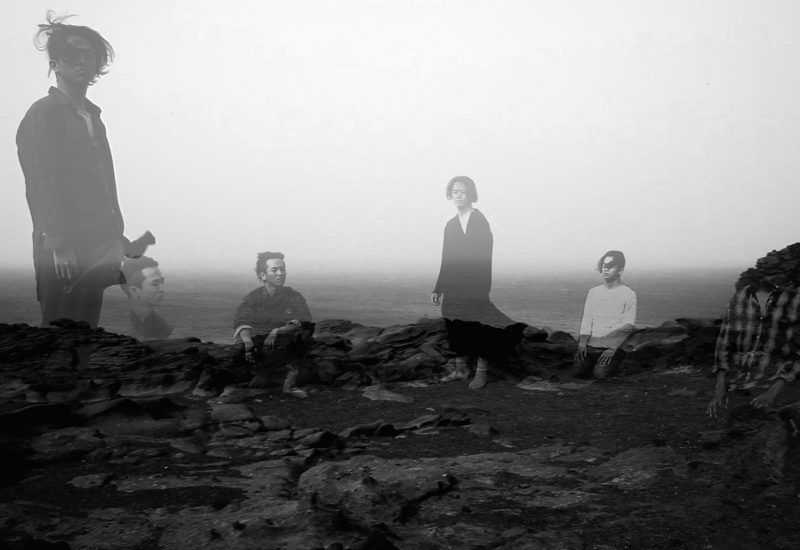
EUPHORIA
South Korea, 2022, 11’51”
Direction and Choreography: Hoyoung Im
A man dreamt of a tiger sitting next to him. In his dream, he was lost in the middle of a mountain and facing lots of his alter egos. He strives to understand, what the meaning of his dream was and starts to look into himself.
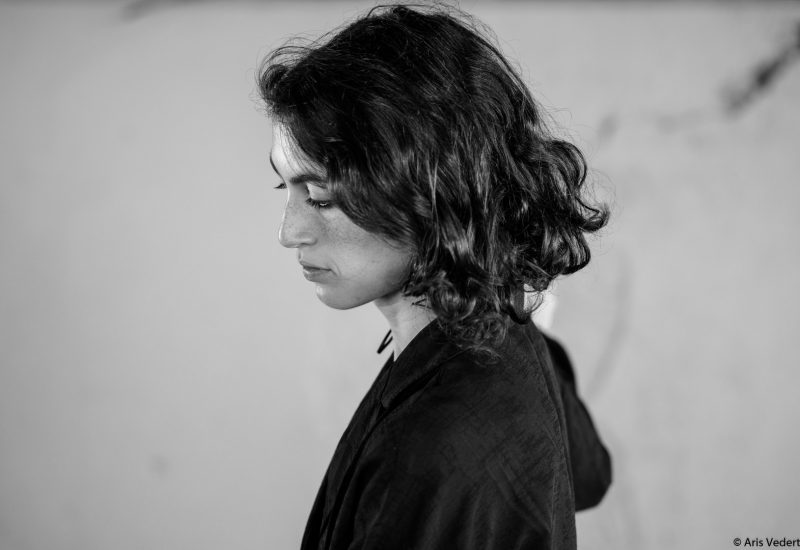
Inertia
Greece, 2022, 3’43”
Direction: Aris Vedertsis, Choreography: Sofia Pouchtou.
It goes against the idea of doing nothing. An urban landscape sets the mood, the city breeze tends to leave us with no space at all – in so many ways. Inertia shows a gentle approach to escape.
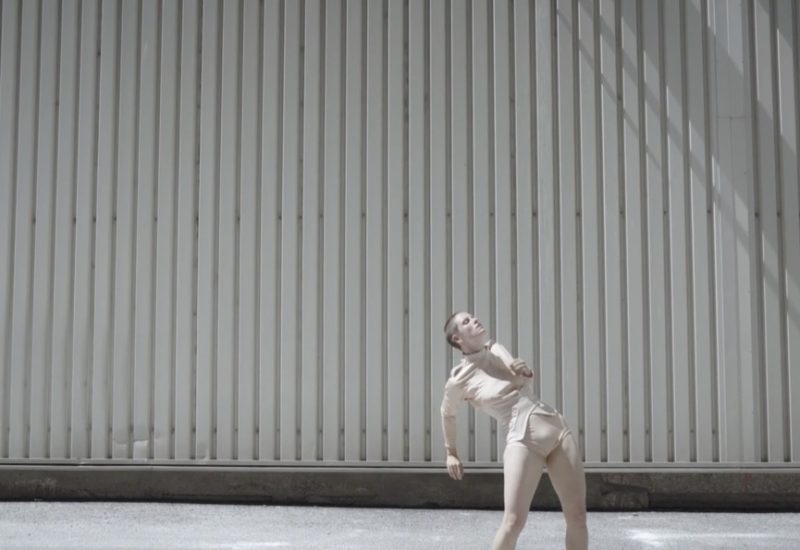
Agnes
Germany, 2021, 10’02’
Direction: Julia Franken, Julia Riera, Choreography: Julia Riera.
Agnes is the second part of the ICON trilogy by Julia Riera & Julia Franken.
We see a woman in a duet with the camera. The dynamic between them raises questions, who is challenging whom? The quality of the looking changes. Is she at the mercy of the camera eye or is she the one that determines what is revealed? A game between power and powerlessness, projection and self-determination.
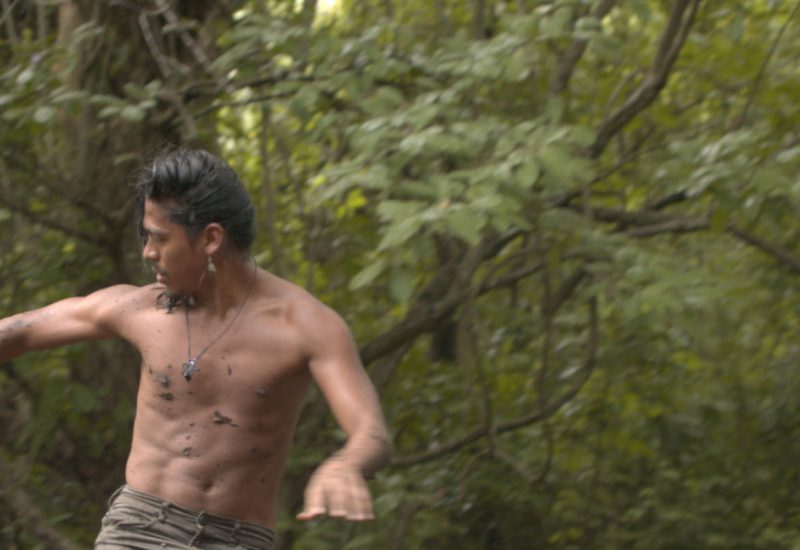
Contrapeso
Finland, 2022, 8’44”
Direction: Kati Maria Kallio, Choreography: Yeinner Chicas.
A Man is guarding his house and everything he owns as an allegory of his life. Which is empty. There is a young girl who penetrates his barriers by leaving her talisman to the man by her kindness. A journey to his inner self starts.
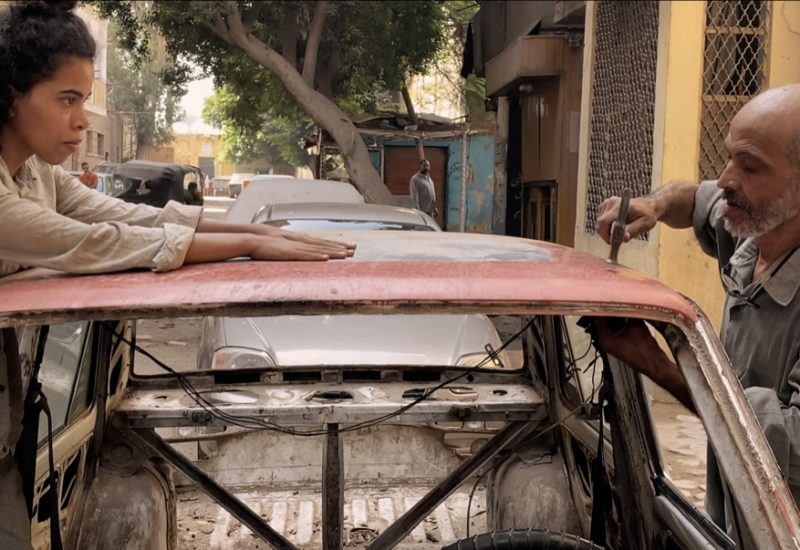
Belia
Egypt, 2021, 9’51”
Direction and Choreography: Eman Hussein.
A young woman and her friends join a car repair shop as “Belia” (colloquial Egyptian for apprentices) to learn the craft from the Ustas (craft headmasters). They explore what this relationship creates as it merges labour with everyday life rhythms to open up a new space for movement.
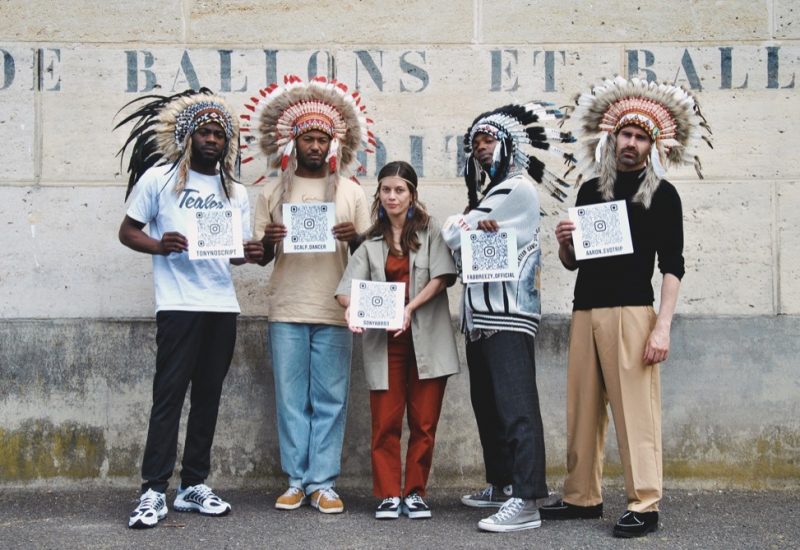
Épicentre
France, 2021, 8’27”
Direction: Anne Nguyen, Greg Kozo, Choreography: Anne Nguyen.
Through dance, the symbolism of the body and the stereotypes associated with bodies, Anne Nguyen invites the onlooker to question the concept of cultural appropriation.
“Épicentre. A film that ‘queries the influence that large architectural complexes have over human and social behaviour’. And celebrates the 60th anniversary of résidence Le Parc by the architect Fernand Pouillon. In order to highlight the monumental and timeless aspects of his developments, I decided to have the dancers wear Native American headdresses. Yes, like the ones you often see in westerns. Well, actually, my frame of reference is Michael Jackson’s Black or White. (…)” – Anne Nguyen

